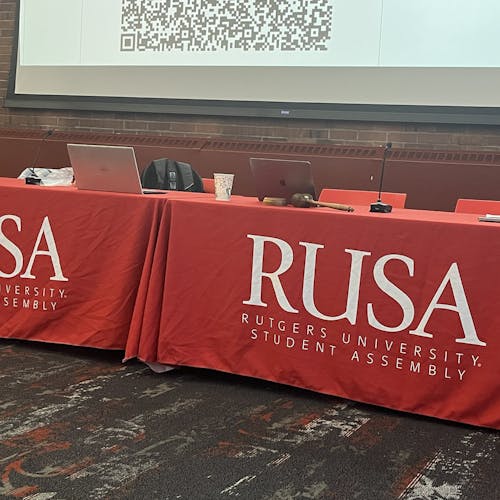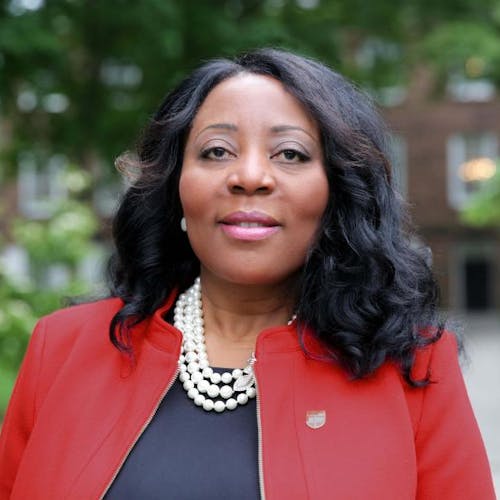Stories of hauntings are alive at Rutgers

Ghouls, ghosts and goblins, oh my! As the season of Halloween comes into full swing at Rutgers, the stories of hauntings and mysteries are still rich in the history of the nearly 250-year-old college.
Richard Wells, chair of the Rutgers University Historical Society Alumni Charter Group, said the College Avenue campus has the most history behind it, where various accounts of spooky tales surround many of the decades and centuries-old buildings.
Willow Grove Cemetery, located behind the New Brunswick Public Library and the Henry Guest House, is rumored to hold the ghost of Kusakabe Taro, Wells said. Kusakabe Taro is the first Japanese student to graduate from an American college, and he died from tuberculosis in 1870, a few weeks before he was supposed to receive his diploma.
“You know when people talk about ghosts they say, ‘Oh, they have something to finish, or they’re restless,’” Wells said.
Taro received his honors posthumously, but rumor has it that he is “still hanging around the cemetery because he wants to get his actual degree.”
Another notable building of spooky sightings and hauntings is Miller Hall, which Wells said used to act as a morgue.
“It’s not so much scary as it is just weird,” he said.
Rosalyn Shlafman, a senior in the School of Arts and Sciences, is not sure if ghosts exist, but always thinks of what it would be like to encounter one.
“I'd probably have a heart attack if something supernatural ever happened,” Shlafman said, adding how she used to live in Demarest Hall, a special-interest hall on the College Avenue campus that formerly housed Pulitizer Prize winning author Junot Diaz and would hear a couple of ghost stories about the dormitory.
Demarest Hall opened in 1951 and has been home to a handful of suicides since then.
Elijah Reiss, a School of Arts and Sciences junior who lives in Demarest Hall on College Avenue and spearheaded collecting much of the history for the book commemorating Rutgers' 250th anniversary, said there have been some “sightings” of ghosts in the main lounge.
"These ghosts usually come out in the main lounge in the early hours of the morning around 2 to 4 a.m.,” Reiss said, adding how he does not personally believe in ghosts, but knows people who claim to have seen them.
The cupola of the building and attic have been locked for decades and are said to be haunted by the ghosts of the hall's past, Reiss said.
The Loree Bowling alley on Douglass campus is another spooky place to be if the doors are unlocked, Reiss said. The alley, which has been closed for five to ten years by now, opened in the early 1960s and seems to be frozen in time.
The basement of Bishop House on the College Avenue campus, which is used for storage, is also "creepy," Reiss said. The house was built in the 1850s and an original brick oven built into the walls is still intact.
“Lots of machines and eerie sounds down there," Reiss said.
Another tidbit of Rutgers—New Brunswick’s spooky past is the Hall-Mills murder, one of the most notorious unsolved murder mysteries of New Jersey in the early twentieth century, according to an article written in 1984 by Mary S. Hartman, former dean of Douglass College.
Edward Hall, an Episcopal minister, and Eleanor Mills, a member of his choir, were found murdered on Sept. 14, 1922 just outside of New Brunswick. The two were said to be having an affair.
“There was national, even international sensation in September 1922, when the bodies of an Episcopalian rector and of a choir singer from his church in New Brunswick were discovered under a crab apple tree off a well-known lovers' lane just outside town,” Hartman wrote.
The murder was not just a local scare, but also put the Rutgers—New Brunswick campus in the national spotlight.
“It was the most covered story in the U.S. until the Lindbergh baby was abducted,” Reiss said.
Hartman lived in the building where the Episcopalian rector resided, and from which he set out to never return on the evening of his murder.
According to Hartman’s article, a minister friend of Hall named Paul Hamborszky said to a newspaper that at the time of the crime, Hall told him his wife knew of the affair with the choir singer, and one of her relatives threatened to kill him unless he stopped seeing her.
Before Hamborszky could even testify, however, he vanished on the eve of the trial in 1926.
“There is no telling whether the truth of the identity of the murderer or murderers will ever be uncovered, but the documents themselves have many other truths to tell about forgotten lives in our past," Hartman wrote. "Here, surely, is America’s most fascinating unsolved homicide."



